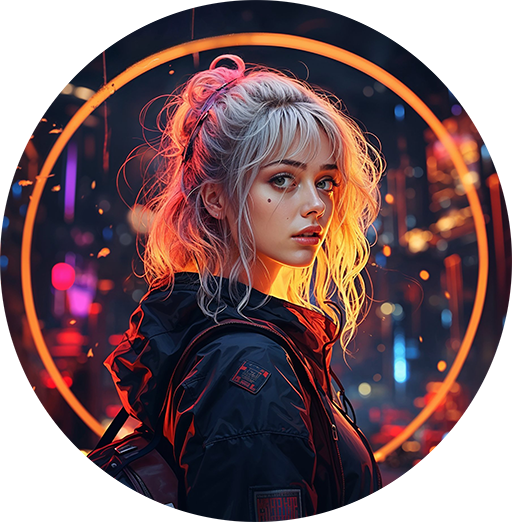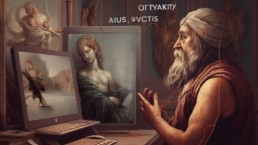Digital Art: Debunking Myths
In recent years, digital art has become increasingly popular, yet it is still surrounded by numerous misconceptions and questions. As artists explore the fusion of art and artificial intelligence, it is essential to clarify the meaning of digital art, address common concerns, and emphasize its value in today’s creative landscape.
Understanding Digital Art
Digital art refers to any form of artistic expression that uses digital technology as an integral part of the creation, manipulation, or presentation process. It encompasses various styles and techniques, ranging from digital painting and illustration to photography, 3D modeling, and interactive installations.
Debunking Myths and Addressing Concerns
Digital art is real art: Some argue that digital art is not “real art” because it does not involve traditional mediums like paint, canvas, or sculpting materials. However, digital art is simply another medium that allows artists to express their creativity and emotions, just like traditional art forms.
Digital art isn’t inherently better or worse: The quality of an artwork depends on the artist’s skill and creative vision, regardless of the medium used. While digital tools may offer convenience and efficiency, traditional art techniques have their own unique charm and tactile qualities.
Digital art is not cheating: The use of digital tools does not automatically make art creation easier or less authentic. Digital artists still need to develop their skills, hone their craft, and invest time and effort into their work.
Exploring the World of Digital Art
Where to find digital art: Digital art can be found in various places, such as online galleries, social media platforms, digital museums, and even physical exhibitions showcasing digital prints or interactive installations.
The future of traditional and digital art: While digital art continues to grow in popularity, it is unlikely to replace traditional art completely. Both forms of art have their own distinct value and appeal, and the two can coexist, enriching the overall creative landscape.
Protecting digital art: Digital art can indeed be copyrighted. Just like traditional art, digital creations are protected by intellectual property laws, allowing artists to safeguard their work from unauthorized use or reproduction.
Digital art is a diverse and fascinating realm that offers new opportunities for artists to explore and express their creativity. By understanding its true potential and addressing common misconceptions, artists can embrace digital art as a valuable and legitimate form of artistic expression.
Ethics and Copyright in AI-Generated Art
Explore the challenges and implications of copyright and ownership in the realm of AI-generated art, and how artists and organizations can protect their creations.
AI systems learn from vast amounts of data, including copyrighted material, there is a risk that these systems might generate art that too closely resembles pre-existing works.
As AI-generated art becomes increasingly popular, artists and organizations face new challenges in navigating the legal landscape surrounding copyright and ownership. This growing field raises ethical questions and implications that are essential to address to ensure the protection of both human creators and AI-generated works.
One of the primary concerns in AI-generated art is determining the ownership of the final piece. Traditionally, copyright law awards ownership to the creator of a work. However, in the case of AI-generated art, it is unclear whether the artist who provides the input, the AI developer, or even the AI itself should be considered the creator.
Another challenge lies in the potential for AI-generated art to inadvertently infringe upon existing copyrights. As AI systems learn from vast amounts of data, including copyrighted material, there is a risk that these systems might generate art that too closely resembles pre-existing works. This issue highlights the importance of developing methods to ensure that AI-generated art remains original and does not violate copyright laws.
To navigate these challenges, artists and organizations need to stay informed about the latest developments in copyright law and consider implementing agreements that clearly outline the rights and responsibilities of all parties involved. This may include contracts between artists and AI developers, ensuring that the ownership of AI-generated works is clearly defined.
Additionally, artists should consider registering their AI-generated works with copyright offices to establish a legal record of their creations. This process can help protect artists from potential infringement claims and provide a basis for legal action should disputes arise.
As AI-generated art continues to evolve, it is crucial for artists and organizations to stay informed about the changing legal landscape and take steps to protect their work. By understanding the challenges and implications of copyright in this burgeoning field, artists can confidently create and share their AI-generated masterpieces.


